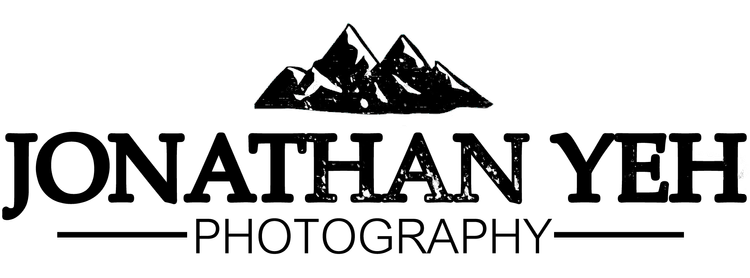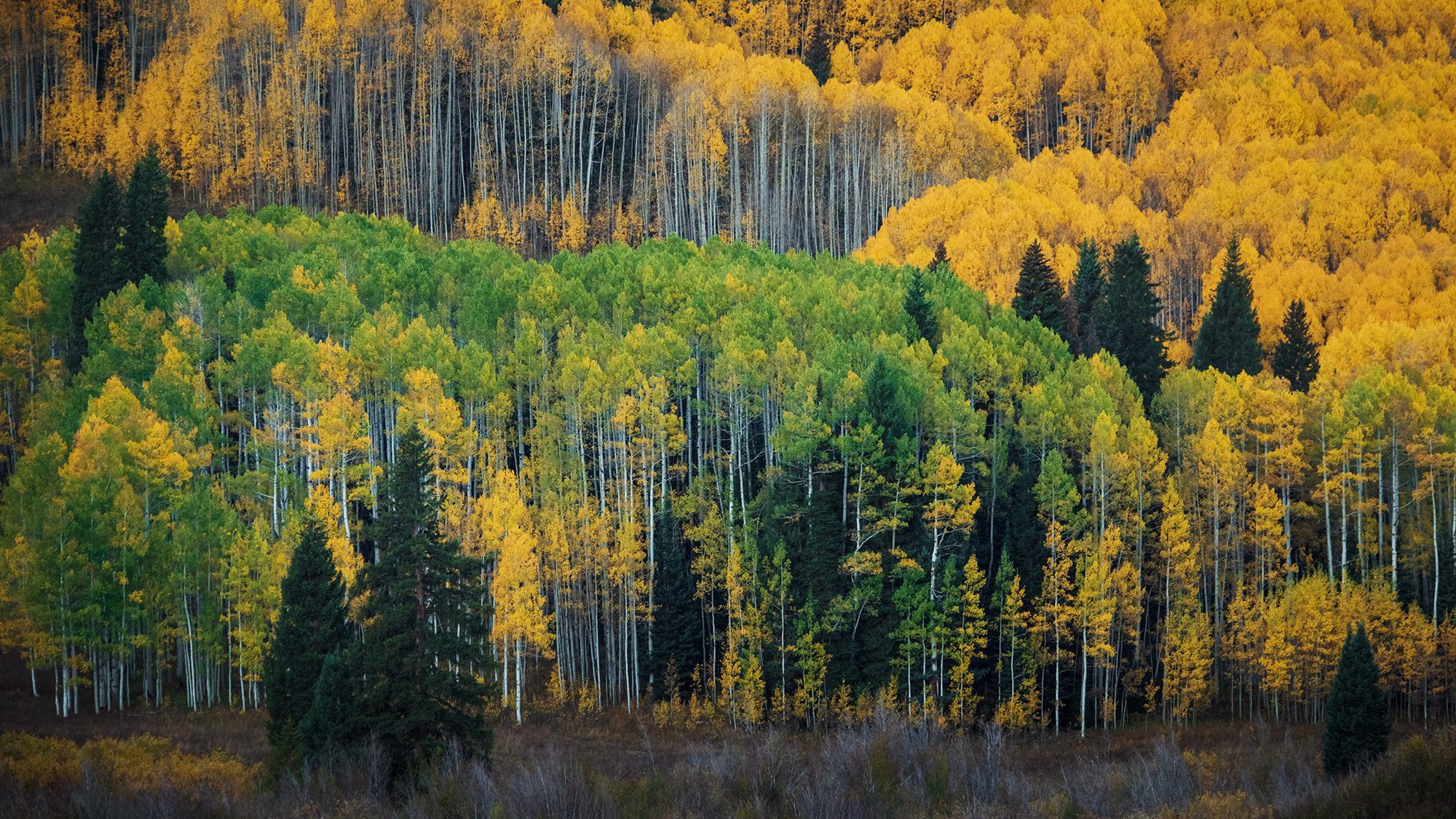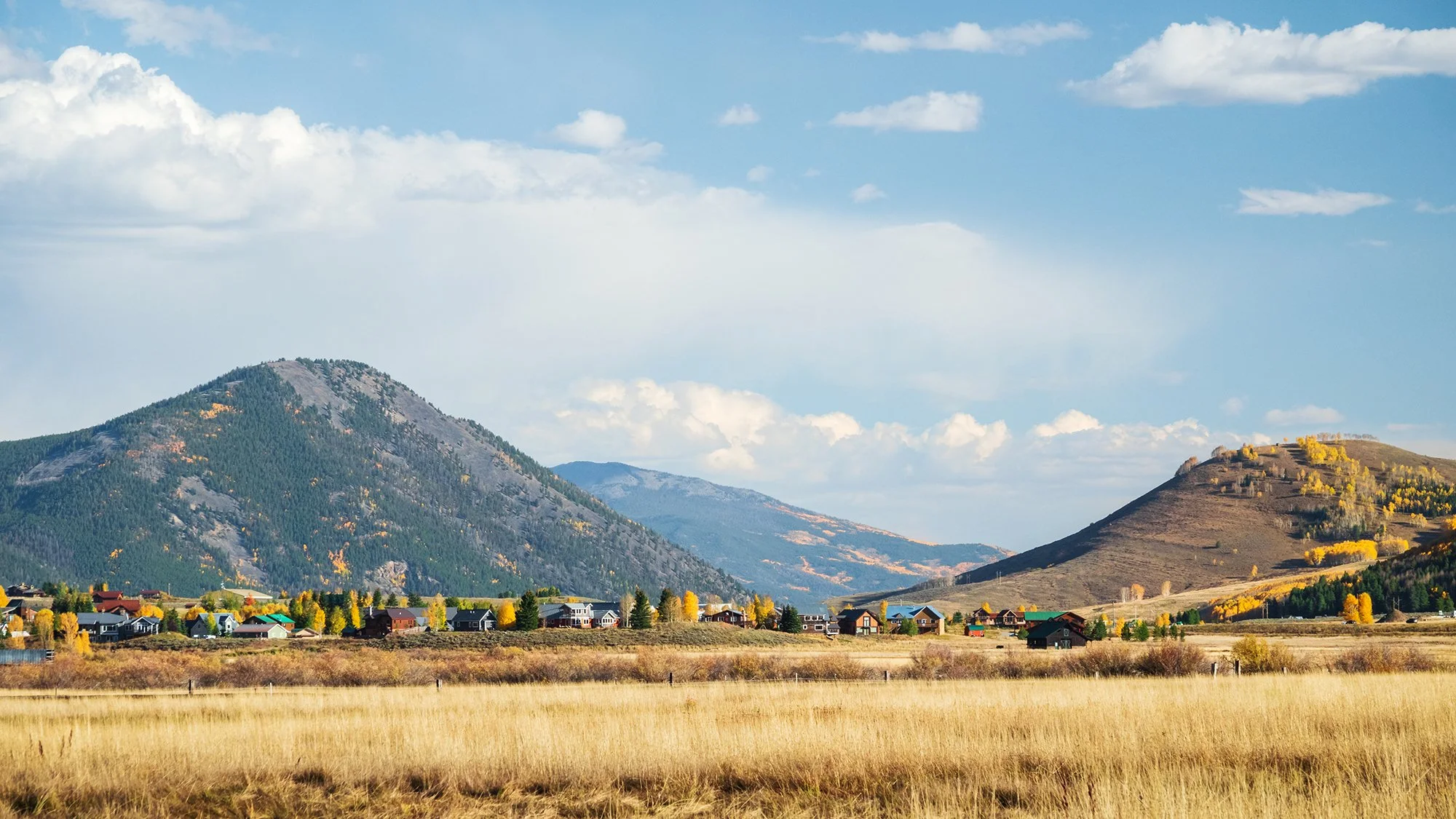In the morning, it’s back to Kebler Pass. In the darkness of the hour before dawn, after a few bites of raisin bread and a bottle of chocolate milk, I creep back through the old Western set that is the town of Crested Butte (which I still haven’t seen in daylight), and up the road into the mountains. My sunrise destination is a fairly obvious overlook that I scouted the day before, along a hairpin turn on the road just before it descends into the pass, with a nice wide view of East Beckwith Mountain to the south and the Dyke (a serrated ridge of granite) to the north. Joined by a few other photographers (all of whom are very gracious and equally sardonic about the cloudless skies), I shoot a sunrise timelapse of East Beckwith Mountain while using my main camera to focus on some of the nearby aspens, as well as the moonrise behind us. Eventually, as the sun fully crests the horizon, I move on downward into the pass.
My second stop is a brief walk from the roadside down to a group of beaver ponds that I noticed the night before. Here I meet two other photographers working the early morning scene - a calm, perfect reflection of East Beckwith in the water. I make a mental note of this place, and plan to return later in the day, for sunset. From here, I drive a short distance to Horse Ranch Park and my main objective for the day: a seven-mile hike along the Dark Canyon Trail, looping up to the foothills beneath Ruby Peak and the Dyke. Although the hike will prove to be more challenging than I anticipated (a chunky but reasonable two thousand feet of cumulative elevation gain over the seven miles, but at a much higher elevation than my coastal New Englander lungs are used to extracting oxygen from), it will simultaneously prove itself as one of the most beautiful, most photographically productive hikes I have ever done.
After turning north from the car park, the trail quickly plunges headlong into some of the densest and most beautiful aspen forests anywhere in the world. What I love so much about the Dark Canyon Trail, however, is its variety. Even in its initial (relatively flat, easy) few miles hiking the loop clockwise, the trail and its scenery bear constant surprises. It weaves its way along forested slopes, through aspen groves, to the edge of open meadows, and past creeks and enormous beaver ponds (one of them practically damming a 10-foot water level difference between two ponds!). The trail notably opens up several times, revealing stuning views of the Beckwith Mountains. In the light of a totally cloudless mid-morning, conditions are too harsh to really benefit large landscapes, but the Dark Canyon Trail provides me many opportunities to shoot intimate forest scenes, backlit foliage, and detailed flora. I keep a pitiful pace, stopping to shoot the forest every few hundred feet, leapfrogging back and forth with a group of older hikers with big day packs and hiking poles. Mindful of the time, I eventually holster the camera and forge on, as I’d like to be able to tackle the back part of the loop and its significant elevation gain before the relatively warm morning gets any hotter.
After passing an impressive overlook of Kebler Pass to the west and north (where the hiking group stops for a snack and asks me to take a group photo of them), the trail enters the Ragged Wilderness and begins to rise sharply uphill onto the flanks of Ruby Peak. Although I’m well-geared and carrying all the food and water I need, it’s truly an arduous stretch of trail for me. I feel far more winded than I was expecting to be near the end of half-marathon training, and have to pause to take some deep breaths every few minutes along the ascent. After a tough, sweaty uphill slog (and a few startling encounters with very loud click beetles), I reach the apex of the loop at an airy ridge overlooking the pass and mountains to the south, where other hikers and picnickers are gathered. After shooting the obligatory panorama, I sit and rest for awhile, shielding my face from the harsh sun using my shirt hoodie, and re-hydrating and enjoying a snack (second breakfast really) of bread, cheese, a banana, and a fruit bar. Then, it’s quickly downhill through the aspen forest, covering three miles in an hour and rejoining the original trail back to the parking lot. Along the way, semi-trail-running through the trees and passing equally sweaty uphill hikers, I feel a slight twinge in my left middle toe (where I’ve been nursing a toenail bruise from running) and wonder for awhile whether I’ve lost the toenail entirely. Alas, upon checking my foot back at the guesthouse, this turns out to be a false alarm. For weeks to come (indeed, all the way past the actual race day in November), I’ll be stuck staring at this blueberry-of-a-toe and wondering when it will look and feel normal again.
Back at the car, it’s early afternoon, and I’ve completed seven miles in roughly four hours (about as long as I thought it would take, given all the amazing photography opportunities). I choose to head back to Crested Butte to eat lunch and rest up at the guesthouse. Although I won’t be doing much exploring in town itself until tomorrow, I do take the opportunity to lounge around a bit in the downstairs living area of the guesthouse, where there’s a roaring fire, delightful savory and sweet pastries for breakfast, and complimentary cookies and red wine in the afternoon. Strolling into the wooden salon, with my twin cameras slung across my chest and holstered against my hip - I feel like a bonafide country cowboy. A Chinese-American leaf-peeping tourist-photographer cowboy. “Howdy,” I say with my best drawl to the mostly geriatric leaf-peeping tourists sitting in front of the fireplace. They nod silently. I head back up to my room and take a nap.
In the late afternoon, I set out to do some more exploring before a planned sunset shoot in Kebler Pass. This time, I choose to turn off the main road before reaching Kebler in order to explore the shores of Lake Irwin, just a few miles up another dirt road. Nestled on the other side of Ruby Peak and its oxidized, stony flanks, Lake Irwin is a prototypical summerland paradise. There are no aspens here — just an evergreen forest of pine and spruce that leads right down to the water’s edge, where rope swings and iceboxes await. I meander along a small fisherman’s trail that encircles the lake, check out some of the campground cabins (closed for the season), and skip some stones while watching a group of teens try to figure out the outboard motor on their boat. At length, they make it out into the middle of the water; their laughs and yips and happy chattering carry clear all the way across to the other shore. Mindful of the time, I turn around at the eastern end of the lake, making my way back to the car while photographing the peaceful surroundings. On the drive back out from the lakeshore to the county road, I pass a white-tailed fawn munching contentedly by the roadside. Then, it’s back, again, to Kebler Pass.
A lightshow among lightshows, tonight at Kebler Pass. Sunset tonight will prove to be the most rewarding one of the entire week (and basically the only one with any clouds in the sky). After stopping by this morning’s sunrise location to take some overview shots of East Beckwith Mountain, I proceed a few miles down the road, walking through the brush down to edge of the beaver pond I scouted in the morning. From here, there are terrific views of East Beckwith (directly to the west) and the adjoining aspen groves, as well as fantastic compositions involving the distant trees to the west and northwest. The light is moving quickly - rays of falling sun shining through between layers of cloud and radiating from behind the mountain. In addition to setting up another (this time, very long timelapse), I take my main camera and walk around and above the beaver pond, looking for varying ways to compose the mountain, trees, and water in pleasing configurations. After settling on a bundle of compositions, I return to these cyclically over the golden hour to capture the rapidly changing light. Sunset is capped off with a burst of luminous light and a refracted, rich pink-and-salmon colors in the clouds surrounding East Beckwith. After documenting as much as I can, I retreat back to the car and return to Crested Butte for the night, satisifed at having been in-position for one of the best sunsets I’ve shot in a very, very long time.








































































































































































